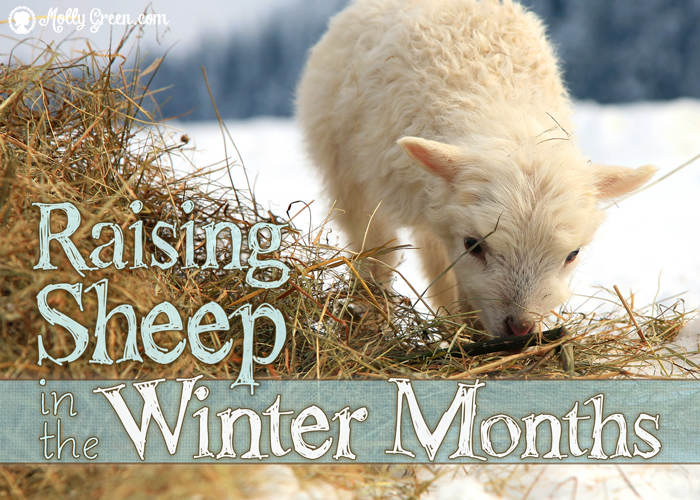By Alyce Repko
When it comes to raising sheep, or really any animal on the homestead, each season has its challenges. Winter is no exception. We prepared for the cold and snowy months by purchasing Cloud and Lily, pure bred Border Leicester sheep, who were only two years old. The plan was to reduce the number of Dorset ewes for breeding to the bare minimum, and breed the new females for lambing in April. The four lambs in the back yard were too young to breed. Unfortunately, there was a glitch in our plans, raising sheep in the winter comes with it’s own set of challenges. Cloud and Lily were too fat to breed and needed to go on a “diet.” We could only breed the Dorset this season, resulting in feeding six “unproductive” sheep during the winter. We cannot count the Ram. He has earned his keep this season.
Last year we had a terrible loss of lambs mainly due to the very cold temperatures in January, the month they were due. We decided to postpone the lambing season, something we should have done before. The Dorset sheep had their rendezvous with the ram in the beginning of November. The ewes are getting plump “in a family way.” We are expecting lambs in April.
Separating Rams from Ewes and Lambs
Cloud and Lily are with the rest of the ewes and the ram is in his area. He is not happy being separated from them, but Cloud and Lily are enjoying being with the rest of herd. Sheep are definitely into “group think.” The lambs have been penned in the backyard without the adult females. If they were penned together, the adults would push the youngsters out of the way, eating the grain for themselves. The lambs need the grain for growth and energy/heat! They like to play on the Bilco basement doors producing a rumbling that can be heard in the house. Expecting to eat on schedule, all the sheep, including the lambs, start complaining they are hungry before dawn! In fact, they would love to convince us that they are underfed. We are onto their scheme, though!
Feeding and Watering Sheep in Winter
During the winter as the rest of the year, we must keep a close eye on individual sheep behavior, looking for sheep that are not eating, or for any kind of cut or injury. While the flock may be outside in a light snow, they prefer to hunker down in the barn or shelter. They do not appreciate rain or heavy snow, keeping close to the barn even when the snow stops.
We have had less snow this year than last year, but more single digit temperatures. This means the outside faucets are frozen, requiring buckets of water to be filled and carried to the barn from inside the house. Any frozen buckets of water from the sheep, as well as the water dishes from the chickens and rabbits must be melted to reuse. The only available space is a small utility room that is heated.
The cold temperatures mean they must eat more feed and hay. While we grew a supply of butternut squash as a supplement for the sheep and chickens, we must purchase hay and feed. They can be picky on their hay and feed as well. We usually purchase second cutting hay as it is more nutritious. In addition, if they don’t like it, they won’t eat it; it is foolish for us to cut corners in this area. One week, we purchased pellet sheep feed rather than the All Stock sweet feed. They refused to eat it! We immediately purchased the sweet feed, and added the rest of the bag of pellet feed with it to hide the taste. This is the most expensive time of year on our homestead.
Preparing for Sheep Lambing Season
As the winter begins to wind down, we will prepare for lambing season. The lambing pens will be set up, and the ewes will be corralled near the barn. This allows us to frequently check up on their behavior. Usually, if they are going into labor, they separate themselves from the rest of the flock, and look for a quiet corner. At that point, the goal is to get them into a lambing pen, where they can be monitored and helped. We are anticipating that the warmer temperatures in April will alleviate the heavy losses of last year. A bonus will be no lambs in the house . . . although at that time of year, the temperatures should be mild enough for them go outside within a short period of time. I want reviving a very cold lamb to be a thing of the past! Spring also means mud, pasture areas that may or may not have fresh green grass soon enough, possibly too much rain, and parasites. In the meantime, we are looking forward to lambing season and the warmer temperatures!
Alyce Repko is the wife of a hard-working husband, and a mother to six adult children who live in five different states. They live on a six-acre farm where they raise rabbits, chickens, and sheep. She puts up food, does freelance artwork, plays with a local orchestra, knits, sews, and buys too many books.





